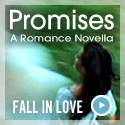28.Sep.2009 | Maria Thurrell
The Ever Expanding Ebook Landscape
 I recently came across a post on TechFlash about the ebook universe. The author, Eric Engleman, created a graphic (shown to the right) to begin to explore the “big boom” of the ebook universe. As Engleman wrote in his post:
I recently came across a post on TechFlash about the ebook universe. The author, Eric Engleman, created a graphic (shown to the right) to begin to explore the “big boom” of the ebook universe. As Engleman wrote in his post:
The buzz around Amazon’s Kindle electronic reader has sparked growing interest in digital books, and the universe of players in this space is growing rapidly. New reading devices and content partnerships are announced on an almost weekly basis.
The world of digital books is fairly young, and as Engleman noted, is changing daily. While this is a great beginning to a comprehensive visual representation of the space, as many of the people who commented on the post noted, this graphic only touches the tip of the iceberg. What I think a lot of commenters noted is that not only are there players missing but there are whole dimensions to this graph that need to be added, such as indie publishers, major publishing houses that are venturing into the digital world and other types of publishers such as magazines (to name just a few).
Perhaps one single graph is already not enough to encapsulate this growing industry.
One of the aspects of all this that I find the most fascinating is how we are having to create words to describe the landscape. A book is a book. We all know what one looks like. The size, color and paper might change, but books have a front cover, a back cover and paper in between with text and sometimes images on them. No matter the publisher, the same basic technology is used to produce them. Done. That is a book. Simple. We have the language to talk about it.
But with this new generation, not only is the format taking many forms, but we don’t even have words with which to talk about them that everyone agrees upon. Some say ebooks, some say digital books. Some use those two terms interchangeably, and some maintain there is a difference. An ebook on a Kindle is different from an ebook on an iPhone. The technology needed to produce a Kindle ebook is different than that for the Stanza iPhone app which is different from Shortcover’s ebooks for the BlackBerry. And these examples are all simple text! Add in video like we are doing, or audio like Enhanced Editions is doing, and you’ve got a whole new ball-game.
So, if we don’t even have the language to discuss this new universe, how can a single image represent it? Or perhaps, only an image can accurately represent what we cannot put into words.
If you were to create your own graph of the digital publishing/book/vook (and anything else you feel belongs in there) universe, what would it look like?
Related posts:


























Cool diagram! Lots of relationships to ponder and new ones to add. This is a good, yet small sampling (”tip of the iceberg”) of the current ebook players in the marketplace. I agree wholeheartedly that there is sooo much more that will be accomplished going forward.
My answer to your question would be a three dimensional representation, or multiple layers that represent different technologies (i.e., software readers, hardware devices, communication channels, etc.) and different relationships/roles (i.e., retailers, distributors, content creators/publishers, etc.) If it was set out on a metrix/grid, a single player such as B&N or Amazon might have several columns checked, since they are increasingly borging on every role.
You raise a very good point. I think any diagram would have to include a graph that showed formats and what/how the media is displayed. I have a first gen Kindle. I read an eBook with a map on that device, but get very frustrated due to the V-E-R-Y limited zoom and clarity. I open that same Kindle book on my iPhone and am muuuuch happier because of the ability to zoom is sooooo much better and the clarity of the map (even zoomed) is much better.
And when I think about formats I’m not just focused on output. I also like to know what must be included on the input side of the equation. So a kindle would equal “grayscale+ tagged + pdf”; an iceberg reader file would be “tagged + rgb + html file; a vook would be “tagged + rgb + html + css + photos + video; and so on.
Looking back I’m not so sure that this makes sense in a short comment, but it’s the germ of an idea for the type of infographic I would like to see.
This is a great diagram. As a digital publisher for children’s books our constant question is “what are we producing”? Everyday some new device or method of distribution is revealed. And everyday we we figure out a way to get what we produce onto the device or into the pipeline.
To create a chart, graph, grid etc. to cover everything would be endless. To break it down there are creators, distributors and consumption. Each of these has many variables as they relate to each other and to specifics. Trying to figure out logic here would be like deciding which game at the fair has the best odds of getting a prize depending on what prize you want, how much to spend and determining how the game is rigged. It could be done but such mind clutter would turn the logical person away.
We all need to embrace technology and make whatever works for you acceptable. Trying to label a moving target is hard but someday it will have a name and when it does the world will have moved on to the next thing.
@trav that is a very interesting way to think about it -> input qualities, not just output. It would be interesting to create a chart that includes all those tags from which a dynamic visualizer can makes a visual representation based on what tags you call forth. I think it’s pretty clear that a static image doesn’t work here!
And while the geek in me would love to see this dynamic visualizer, is there value in creating it? Other than for pure curiosity and the coolness of it factor? Although as I’m typing this, it occurs to me that something like this might help identify gaps in the current landscape and places for further expansion. Hmmm. Any programmers out there want to tackle this?!
@Rick – Trying to wrap your head around it all can seem like an impossible task. And things are definitely moving so fast that is it near impossible to stay ahead.
Do you see a shift in the children’s book industry as well toward digital? What do you think that landscape will look like in two years? In five?
[...] to Engelman’s post over at the Vook blog, Maria Thurrell asked, “Perhaps one single graph is already not enough to encapsulate this [...]
[...] blog.Powered by WP Greet BoxYesterday, I responded to a comment on yesterday’s post about the landscape of digital books. In my response, I asked Rick Toone what he sees as the future of children’s books in [...]
[...] to Engelman’s post over at the Vook blog, Maria Thurrell asked, “Perhaps one single graph is already not enough to encapsulate this [...]